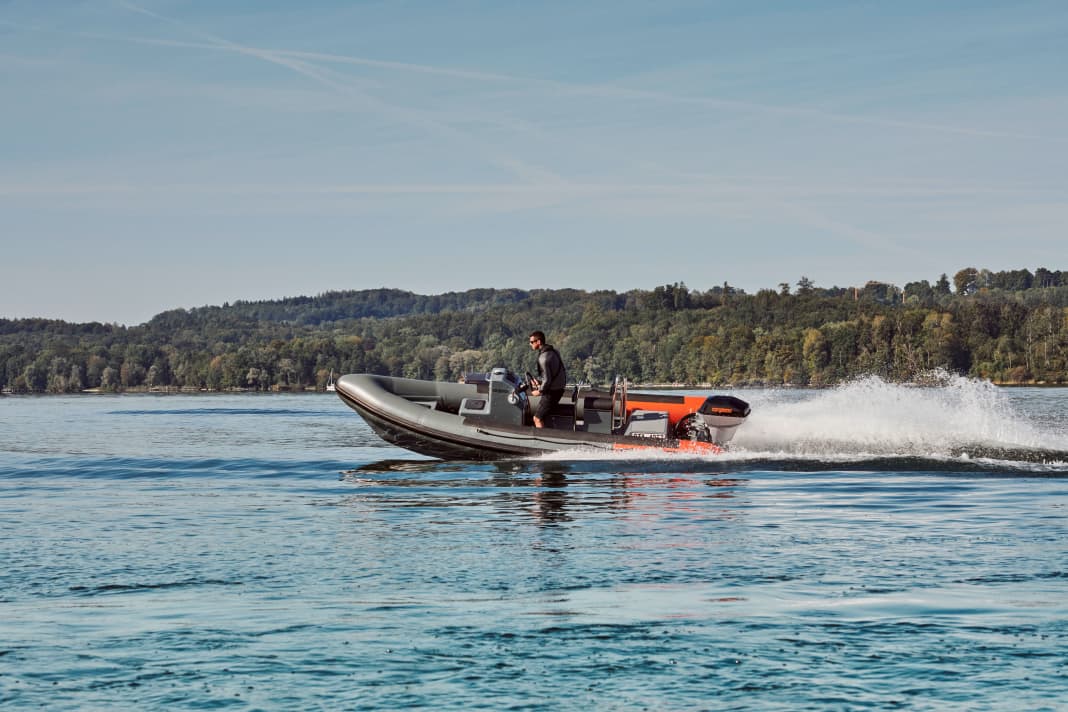Equipment: Torqeedo registers "extreme demand" for electric motors for boats
Jochen Rieker
· 18.11.2022






The area in front of the black-clad headquarters still looks bare and barren. Where turf and plants will one day flourish, there is currently only brown topsoil. Just one month has passed since the completion of Torqeedo's new headquarters, which is intended to help keep the German pioneer of emission-free boat drives at the forefront of the market in the future - a market that is facing an enormous growth spurt.
In the modern building complex with the orange-red logo at the entrance, all departments now work under one roof for the first time. Previously, they were spread across several locations.
The concentration is not only intended to ensure greater proximity, dialogue and efficiency. It also symbolises the rapid development that Torqeedo has already undergone: from a start-up founded in 2005 to one of the best-known companies in water sports, which has almost single-handedly turned the market for outboard motors upside down and now competes with giants such as Volvo-Penta, Yanmar and Mercury.
From the 1 hp outboard to the 135 hp shaft system
The portfolio of the electric pioneers has long since expanded beyond the silver-grey dinghy drives of the Travel series. The pod motors in the Cruise series now offer as much propulsion as a conventional 25 hp diesel, while the shaft systems in the Deep Blue series have up to 135 hp. Torqeedo has also developed the entire infrastructure, from batteries and electronic control levers to the bus system.
The showroom at the reception in Oberpfaffenhofen impressively demonstrates the depth of production. The products fill almost the entire width of the administration building. And more are to be added in a few months' time.
Florian Bez is also new on board: as CEO, he took up his position almost at the same time as the move to the new premises and is expected to oversee the next phase of growth. "Over the past 17 years, we have worked hard to capture one to two per cent of the market for boat drives," he says. The biggest piece is only now coming, with the ongoing transformation from combustion engines to electric motors. "We are currently seeing extreme demand." Although there are also more and more competitors, he sees this in a positive light. The competition "will make us better".
100 per cent increase in productivity with cruise drives
One factor here is the new location. The relocation and the associated restructuring of processes on a total of nine production lines has enabled Torqeedo to make enormous steps towards rationalisation, as Production Manager Bernhard Becker explains. The capacity for Cruise 6 outboards alone has been doubled from 300 to 350 drives per week to 700 units - while maintaining comprehensive quality controls.
As before, every motor is tested on various test benches for water tightness and output power, among other things, before delivery. With the help of industrial robots, Torqeedo also carries out extensive endurance tests, for example on the strength of the tiller arm on the travel or cruise outboards or on the plug connections, which must remain watertight even after several 10,000 cycles.
Around 80 per cent of the components that are assembled here come from the surrounding area. All important suppliers are located no more than 300 kilometres away. Only a few cables, plugs and other smaller components come from the Far East.
As Florian Bez proudly announces, the 200,000th engine will soon be produced in Oberpfaffenhofen. Until now, the vast majority have been outboards. In the next phase, however, built-in and sub-mounted drives will become more important.
Daysailer as a pioneer of electrification
Phillip Goethe, responsible for strategy and product management, sees one area in particular where the breakthrough is imminent: Daysailers. He cites Saffier Yachts from Holland as a prime example of the growing electrification, which "recognised the advantages early on". In addition to the quietness and cleanliness of pod motors, these include their small footprint and more favourable weight compared to a diesel unit. "Because the boats are often travelling on inland waterways and sail so well, the range doesn't play a role here either," says Goethe.
However, the Beneteau Group, a volume supplier, is now also one of Torqeedo's strategic partners. The still young catamaran brand Excess is one of the pioneers here; in the motorboat segment, it is the displacement boats from Delphia Yachts that are designed and equipped with electric drives.
"In the past, we travelled to Beneteau year after year and said: Now is the time to electrify the fleet!" Not much has changed. "But now we see a number of market sectors at a tipping point - not just one, but 20 or more."
This is probably one of the reasons why Torqeedo is more of a tech company than a motor manufacturer. While 30 employees currently work in production and logistics, 65 engineers are under contract in development. And they have already cooked up the next innovations.
Florian Bez did not want to reveal which ones at the presentation of the headquarters. Just this much: "in less than twelve months" there will be exciting new products from Oberpfaffenhofen.

